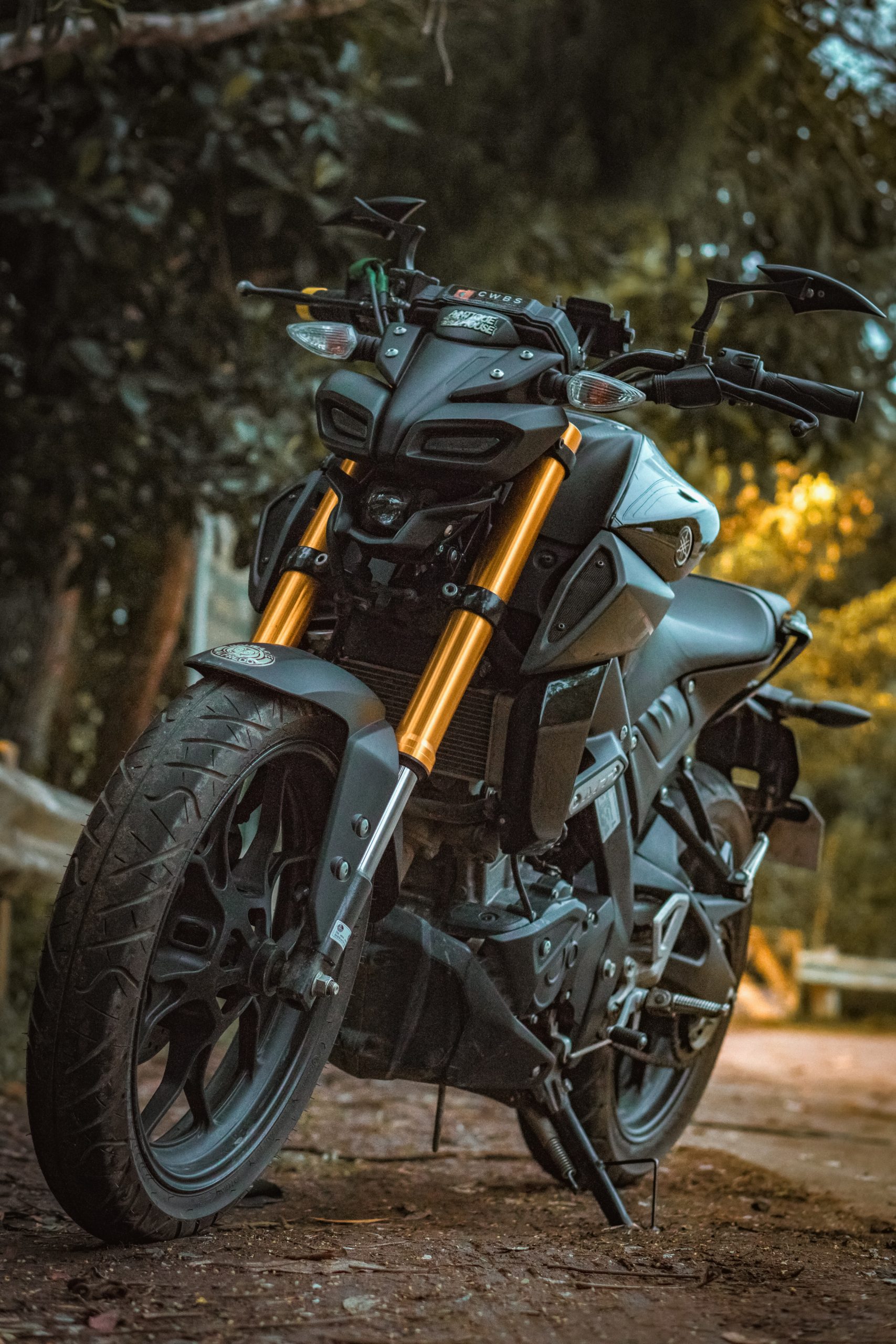Forum Replies Created
The “Five to Survive” Rule & Why You Should Use It
-
AuthorPosts
-
TheAbomb12
Participantwhile I agree that it’s good practice to shift down 1 at a time gradually when coming to stops… when there is a REAL emergency ( as In “oh shit, I need to stop NOW”) Its very important to forget about shifting and focus completely on simply braking; especially at his skill level.
Remember… in panic situations its hard to think about things and react to them quickly especially with new riders– worrying about shifting while trying to stop a bike quickly very often simply adds to reaction time, or worse, degrades the quality of your response.
Being in first gear in order to take off to an escape route is very very important; But if you hit the car in front of you anyways, the escape route doesn’t matter.
TheAbomb12
ParticipantSo! For red traffic lights, do as above, but instead of just click, click, clicking down through all the gears one immediately after the other, instead, hold in the clutch for the duration of your slow-down (as above), but only click down into the next lower gear when you have slowed to a speed which is appropriate for that lower gear (you’re also braking at the same time remember).
imo I don’t think that is a good idea; honestly its a bad habit when moving to not release the clutch after every gear change (or at most more than two gear changes). The reason I say this, what if you misjudge your current speed (or arn’t concentrating right) and you down shift 2 or 3 gears, but aren’t going slow enough when you accidentally drop the clutch…. that is a very dangerous situation.
Andrew, here are my tips for shifting.
* If you have a 6 speed transmission and are in 6th gear and coming into a stop- try estimating how long it will take you to come to a complete stop. Then count to 5, down shift after each number so that you should be on “5” (or first gear) by the time you come to a stop. Start the counting a little after you first start braking or decelerating (shift down each time you count).
*You know you are downshifting correctly when you are able to downshift (pull clutch in, shift down, release clutch) feeling little to no jerking or engine braking AT ALL.
* just practice down shifting BY Ear…. I too had lots of trouble downshifting too, especially when I looked at my speedometer and tach; its much easier to simply listen and shift.
* You don’t have to pull in the clutch all the way down, just enough to get it past the friction zone. I found this speeds up shifting quickly through gears.
* Release the clutch slowly when downshifting, as if you are going from a stop in first gear.
* For emergency stops, pull in the clutch then apply the brakes until you come to a complete stop. Worry about shifting back down after you have stopped.
TheAbomb12
ParticipantSlow down the clutch…. add just a bit of throttle– but just enough to keep it going.
Practice driving as SLOW as you can in a straight line, using the clutch and throttle- then add in turning once you got the hang of it. If you still have problems turning, you might want to practice balancing on a bicycle by going as slow as you can and counterbalancing to turn. Counter balancing on a bike is very similar to a motorcycle (except for the whole weight thing).
oh… I might be wrong but… DON’T control your speed with the rear brake while turning… I’m pretty sure that’s a good way to drop the bike…
Use your throttle to control speed— but use very GRADUAL twists of the throttle. Sudden throttle changes, or braking causes instability while turning, increasing your chances of laying down the bike.
TheAbomb12
Participant+1 to frame sliders.
but… use your sidestand– you just need to make sure that the handlebars are turned ALL the way to the left— otherwise, it will be very easy to tip over to the right.
August 12, 2008 at 2:35 am in reply to: Friend wants brand new GSXR for first bike and won’t listen to reason. How do I prevent her from making a serious mistake? #10346TheAbomb12
Participantslap her.
slap her silly.
that is the only answer.
TheAbomb12
Participantit should be on the helmet for sure… but usually there should be a sticker on the box.
TheAbomb12
Participant(sorry for the long previous post)
after doing a bit more research, I think I have come to a more reasoned conclusion…
a purely Snell helmet will protect better against extreme high impacts than the DOT standard will
BUT… the DOT standard protects well in most crashes, and generally subjects your head to less prolonged deceleration. This is were people consider DOT to be better in typical crashes.
however, a Helmet that is BOTH DOT and SNELL should protect even better than just a helmet that is only DOT or SNELL approved. After doing the research, I would buy a SNELL only helmet at all; but good thing that Most helmets that are Snell approved are also DOT.
TheAbomb12
Participantyeah… I don’t want to spark and heated debate… but I started looking into the differences between DOT and Snell, and pulled this up on the Snell website…but I think the key here is that BOTH tests use acceleration to gauge the performance of a helmet; which is much more accurate indication of how well a helmet protects then how thick/soft the material is.
Impact criteria tell the testers how to interpret test results. Ancient wisdom has it that it’s not the fall that does the damage, it’s the sudden stop. Both Snell and DOT measure the suddenness of the stop with an accelerometer, a device used to measure acceleration or in this case deceleration, that is mounted inside the headform. When the helmet smacks into the anvil, the accelerometer measures the headform deceleration throughout the duration of the impact event. This acceleration pulse is generally plotted as G’s versus milliseconds where one G is equal to the acceleration due to gravity on the surface of the earth. The testers analyze the acceleration pulse to determine whether the helmet passed or failed the test. Snell and DOT use different methods to analyze these pulses. Snell limits the peak value to 300 G’s. The DOT Standard requires that the peak acceleration not exceed 400 G’s but they also put duration limits on the acceleration pulse. The period of time for which the pulse exceeds 200 G’s must not be longer than 2 milliseconds. The period of time for which the pulse exceeds 150 G’s must not be longer than 4 milliseconds. Snell, among others, questions the validity of these duration criteria. […]
so it sounds like there are two main differences;
Snell has a max peak acceleration of 300- period, while DOT allows for peaks of 400, but no more than 150 for more than 4 ms. So to pass SNELL, you have to keep the acceleration inside the helmet lower over all, but the duration of acceleration technically could be more than what is certifiable under DOT.
BUT keep in mind, ALL Snell impact tests are performed at 110 joules; versus DOT impacts of 110 for only large helmet sizes.
Check out the table on the website for further examination.
…
I also thought this little bit was interesting. But then again… it is the SNELL website
There are also administrative differences between Snell and DOT.[…] Snell technicians in Snell labs tested samples of the helmet to Snell standards before the helmet was certified. Furthermore, as a condition of certification, Snell regularly buys samples of all Snell certified products and brings them into our lab for follow-up testing.
DOT certification is done on the honor system. The helmet’s manufacturer determines whether his helmets satisfy DOT and then claims the qualification for himself. There is not even a reporting requirement. […]
August 10, 2008 at 8:09 pm in reply to: Riding with one or two fingers on brake lever: for or against? #10209TheAbomb12
ParticipantBad Habit… Especially during turns. If you accidentally pull the brake you could end up crashing/sliding.
Another reason is that its easier for you to use the brake when its unnecessary, causing you to go through brake pads quicker.
you can get away with it on lower CC bikes, but on real Sports and SS bikes, the brakes are so powerful that you don’t want to accidentally engage them, even going straight.
What is so hard about quickly reaching one or two fingers up when you need to stop?
TheAbomb12
ParticipantI checked it out, and while the helmet features look nice, its not Snell lab approved (Imagine because of the visor feature). I won’t wear anything unless it passes Snell Inspection.
August 8, 2008 at 4:26 am in reply to: You must have heard it all before: a complete newbie unsure which motorcycle to buy… #10057TheAbomb12
Participantmy apologize for my ignorance of the Vulcan 500 as a commuter bike… The Only Cruiser I have ever ridden any distance and a Honda Shadow 1100cc…. definitely NOT a commuter bike. I’m sure smaller cruisers would be easier to commute on.
August 7, 2008 at 3:04 pm in reply to: You must have heard it all before: a complete newbie unsure which motorcycle to buy… #10026TheAbomb12
Participantcruisers are not commuting bikes…
if that is really the primary role you want, a Standard or sport standard is the style of bike you need. the Ninja 250 fits the bill perfectly.
If you do get a vulcan– I wouldn’t worry about the 500cc engine… Cruisers are different animals CC wise than sports bikes. Power wise, you should be fine; but it won’t be as nimble– maneuverability is something that you should really have for a commuting bike in order to easily navigate traffic safely.
TheAbomb12
Participantnever have your foot over the brake pedal while riding (unless you are going to use it)… you could hit a bump, and engage the brake harder than is safe– very dangerous especially in turns.
Are you Able to put your foot to the side? Or can you place your toe Under the brake slightly?
TheAbomb12
Participant“girls will see you on a japanese bike and think you have a tiny d**k”
as opposed to a guy on a huge 1600cc Harley? Just tell her you don’t need to compensate for something (or lack thereof).
TheAbomb12
Participantok… well in the absence of a motorcycle jacket… wear a long sleeve shirt; or even better just a normal jacket (that isn’t too hot) because they have more fabric then simply a long-sleeve shirt.
-
AuthorPosts

